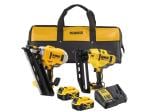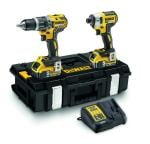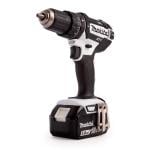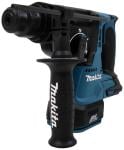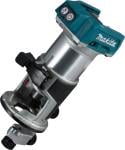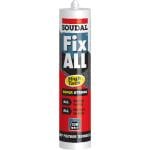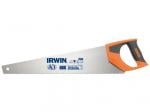Must Have Power Tools for Plumbers
Power tools have revolutionized the plumbing industry by enhancing efficiency, precision, and overall performance. Plumbers rely on a range of specialized power tools to tackle various tasks, from installation to repairs. In this guide, we will explore the essential power tools that every plumber should have in their toolkit to excel in their work.
Introduction
Plumbers work with complex systems that require specialized tools to ensure accurate and efficient results. Power tools provide the speed and precision needed for various plumbing tasks, from installing pipes to fixing leaks.
Cordless Drills
A cordless drill is a versatile power tool that every plumber should have. It's essential for drilling holes in various materials, such as wood, metal, and plastic. Cordless drills offer mobility and convenience, allowing plumbers to work in tight spaces without the hassle of cords.
How to Use:
- Choose the appropriate drill bit for the material you are drilling into (wood, metal, etc.).
- Insert the drill bit securely into the drill's chuck.
- Adjust the drill's torque setting based on the material and task.
- Place the drill bit at the desired drilling location and squeeze the trigger to start drilling.
- Apply consistent pressure while maintaining a steady speed for a clean hole.
Cordless drills come with various features, including adjustable speed settings and built-in LED lights for improved visibility in dimly lit areas. The ability to switch between drilling and driving functions makes them an invaluable tool for plumbers during installations and repairs.
Reciprocating Saws
A reciprocating saw is a powerful tool that can cut through a wide range of materials, including pipes and wood. It's especially useful for demolition work and accessing hard-to-reach areas.
How to Use:
- Attach the appropriate blade for the material you are cutting (metal, wood, etc.).
- Hold the saw with a firm grip and ensure the blade is clear of obstructions.
- Position the saw against the material and activate the trigger.
- Move the saw back and forth in a controlled manner, allowing the blade to cut through the material.
- For precision cuts, guide the saw along the intended cutting path.
Reciprocating saws often feature adjustable speed controls and orbital action settings, allowing plumbers to tailor the tool's performance to the task at hand. They excel in scenarios where precise cuts are required, such as modifying pipes or removing damaged sections.
Drain Auger
A drain auger, also known as a plumbing snake, is a vital power tool used to clear clogs from drains and pipes. Plumbers often encounter clogs that hinder proper water flow, and a drain auger is the go-to tool for effectively removing blockages.
How to Use:
- Insert the drain auger's cable into the drain opening.
- Turn the auger's handle or activate the motor to rotate the cable.
- As the cable rotates, it will break apart or snag the clog, allowing you to pull it out.
- Slowly retract the cable while keeping the clog attached.
- Flush the drain with water to ensure the clog is completely cleared.
Drain augers come in various lengths and cable thicknesses to accommodate different drain sizes and types. Motorized versions offer increased efficiency and reduced effort when tackling stubborn clogs.
ProPress Tool
ProPress tools are indispensable for joining pipes and fittings using compression technology. They provide a quick and efficient way to create secure connections without the need for soldering or welding.
How to Use:
- Select the appropriate ProPress fitting for the pipes you are joining.
- Slide the ProPress fitting onto the pipe end.
- Place the ProPress tool's jaws around the fitting and pipe.
- Activate the tool to compress the fitting onto the pipe, creating a secure connection.
- Check manufacturer guidelines for proper compression time and pressure.
ProPress tools streamline the pipe joining process by eliminating the need for open flames and reducing the risk of overheating or damaging pipes. The resulting connections are reliable, leak-free, and compatible with various pipe materials.
Inspection Camera
An inspection camera, also known as a plumbing camera, is a valuable power tool for diagnosing plumbing issues. It allows plumbers to visually inspect pipes, drains, and sewer lines, identifying blockages, leaks, and other problems.
How to Use:
- Attach the camera head to a flexible cable.
- Insert the camera cable into the pipe or drain opening.
- Monitor the camera feed on the display unit to inspect the interior of the pipe.
- Maneuver the camera through the pipe, identifying blockages, leaks, or other issues.
- Use the camera's built-in lights to illuminate dark areas for better visibility.
Inspection cameras come with varying cable lengths and camera head sizes to suit different pipe diameters. Some models also offer features like video recording and image capture for documentation and analysis.
Conclusion
Power tools have become indispensable for plumbers, enabling them to work efficiently and effectively in various plumbing scenarios. The cordless drill, reciprocating saw, drain auger, ProPress tool, and inspection camera are essential power tools that help plumbers deliver high-quality workmanship and maintain plumbing systems with confidence. Investing in these must-have power tools equips plumbers to handle a wide range of tasks with precision and ease.
FAQs
Can a cordless drill handle heavy-duty drilling tasks?
Yes, modern cordless drills are designed with sufficient power to handle heavy-duty drilling tasks.
How does a drain auger work?
A drain auger features a rotating cable that clears clogs by breaking them apart or pulling them out.
Are ProPress connections reliable for plumbing projects?
Absolutely, ProPress connections are known for their reliability and efficiency in creating leak-free connections.
Can an inspection camera be used for different pipe sizes?
Yes, inspection cameras come with flexible cables and attachments that can adapt to various pipe sizes.
Is a reciprocating saw suitable for cutting through pipes?
Yes, a reciprocating saw equipped with the appropriate blade can easily cut through pipes, making it a versatile tool for plumbers.


